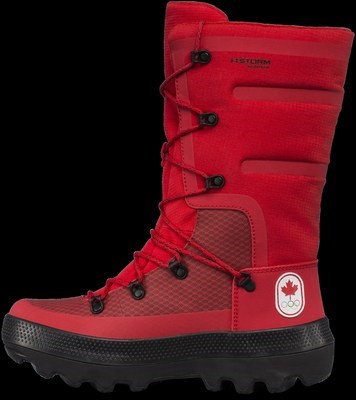Under Armour recovers after disappointing quarters

Fourth quarter revenue was up by 5% contributing to a 5 billion US
dollars full year revenue. After a series of disappointing quarters and several senior management changes, the end of 2017 was brighter
"After years of rapid growth and building a globally recognized brand, the dynamic landscape of 2017 was a catalyst for us to begin strategically transforming Under Armour into an operationally excellent company", commented Under Armour Chairman and CEO Kevin Plank, adding: "A year into this journey, our fourth quarter and full year results demonstrate that the tough decisions we're making are generating the stability necessary to create a more consistent and predictable path to deliver long-term value to our shareholders."
Revenue was up by 5% in the fourth quarter, reaching 1.4 billion US dollars (up by 4% in currency neutral). Revenue to wholesale customers declined by 1% reaching 733 million US dollars and direct -to-consumer revenue was up by 11%, totaling 575 million US dollars. Direct-to-consumer represented 42% of global revenue in the quarter. Consistent with previous expectations, revenue in North America was down by 4%. Strong international momentum continued with revenue up by 47% (up by 43% currency neutral), representing 23% of total revenue. Within the international business, revenue in the EMEA region was up by 45% (up by 37% currency neutral), up by 56% in Asia-Pacific (up by 55% currency neutral) and up by 36% in Latin America (up by 34% currency neutral).
Apparel revenue increased by 2% to 952 million US dollars, as growth in men's training and global football was tempered by declines in the team sports and outdoor categories. Footwear revenue was up by 9% to 246 million US dollars, driven by strength in running, offset by team sports and basketball. Accessories revenue increased by 6% totaling 111 million US dollars led by men's training and running.
Net loss in the period reached 88 million US dollars.
Full year revenue was by up 3% totaling 5.0 billion US dollars. Revenue to wholesale customers declined by 3% to 3.0 billion US dollars and direct-to-consumer revenue was up by 14% to 1.7 billion US dollars. Direct-to-consumer represented 35% of global revenue in 2017.
North America revenue was down by 5%. Continued international strength contributed to a 46% increase in revenue (up by 47% currency neutral), representing 22% of total revenue. Full year revenue in the EMEA area was up by 42% (up by 43% currency neutral), up by 61% in Asia Pacific (up by 63% currency neutral) and up 28% in Latin America (up 26% currency neutral).
Apparel revenue increased by 2% to 3.3 billion US dollars, as strength in men's training and golf was moderated by declines in outdoor and team sports. Footwear revenue was up by 3% to 1.0 billion US dollars, driven by strength in running and men's training mitigated by basketball and youth. Accessories revenue increased by 10% to 446 million US dollars led by strength in men's training.
Net loss reached 48 million US dollars in 2017. Excluding both the fourth quarter one-time charge related to the US Tax Act, and the impact of the restructuring plan, adjusted net income was 87 million US dollars.
Reagrding the outlook for 2018, net revenue for the full year is expected to be up at a low single-digit percentage rate reflecting a mid-single-digit decline in North America and international growth of greater than 25%.
Revenue was up by 5% in the fourth quarter, reaching 1.4 billion US dollars (up by 4% in currency neutral). Revenue to wholesale customers declined by 1% reaching 733 million US dollars and direct -to-consumer revenue was up by 11%, totaling 575 million US dollars. Direct-to-consumer represented 42% of global revenue in the quarter. Consistent with previous expectations, revenue in North America was down by 4%. Strong international momentum continued with revenue up by 47% (up by 43% currency neutral), representing 23% of total revenue. Within the international business, revenue in the EMEA region was up by 45% (up by 37% currency neutral), up by 56% in Asia-Pacific (up by 55% currency neutral) and up by 36% in Latin America (up by 34% currency neutral).
Apparel revenue increased by 2% to 952 million US dollars, as growth in men's training and global football was tempered by declines in the team sports and outdoor categories. Footwear revenue was up by 9% to 246 million US dollars, driven by strength in running, offset by team sports and basketball. Accessories revenue increased by 6% totaling 111 million US dollars led by men's training and running.
Net loss in the period reached 88 million US dollars.
Full year revenue was by up 3% totaling 5.0 billion US dollars. Revenue to wholesale customers declined by 3% to 3.0 billion US dollars and direct-to-consumer revenue was up by 14% to 1.7 billion US dollars. Direct-to-consumer represented 35% of global revenue in 2017.
North America revenue was down by 5%. Continued international strength contributed to a 46% increase in revenue (up by 47% currency neutral), representing 22% of total revenue. Full year revenue in the EMEA area was up by 42% (up by 43% currency neutral), up by 61% in Asia Pacific (up by 63% currency neutral) and up 28% in Latin America (up 26% currency neutral).
Apparel revenue increased by 2% to 3.3 billion US dollars, as strength in men's training and golf was moderated by declines in outdoor and team sports. Footwear revenue was up by 3% to 1.0 billion US dollars, driven by strength in running and men's training mitigated by basketball and youth. Accessories revenue increased by 10% to 446 million US dollars led by strength in men's training.
Net loss reached 48 million US dollars in 2017. Excluding both the fourth quarter one-time charge related to the US Tax Act, and the impact of the restructuring plan, adjusted net income was 87 million US dollars.
Reagrding the outlook for 2018, net revenue for the full year is expected to be up at a low single-digit percentage rate reflecting a mid-single-digit decline in North America and international growth of greater than 25%.

















